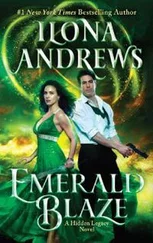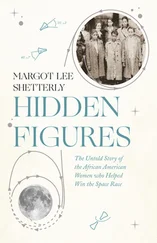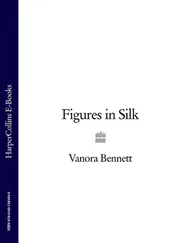1 ...6 7 8 10 11 12 ...90 West Virginia, however, decided to integrate. Quietly, quickly, and without protest, three “unusually capable” Negro students began graduate studies at West Virginia University in Morgantown in the summer of 1940. The Colemans’ daughter Katherine was one of them, a testament to both her academic talent and a strength of character that could stand up to the isolation and scrutiny that came along with being a black student on the front lines of desegregation. But a master’s degree in math would elude Katherine just as it had Dorothy. After the summer session, Katherine decided to leave WVU’s graduate program for a life as a full-time wife and mother, the call of domestic life winning out over career ambition.
Katherine’s parents loved their son-in-law, Jimmy, a chemistry teacher whom Katherine met at her first teaching assignment, and they doted on their three granddaughters. Her choice to prioritize family life did nothing to dampen her parents’ pride in her academic achievements. Did she, like Dorothy, ever wonder about where the opportunity might have taken her? Did she imagine what her talent might look like if it were pushed to the limit? Katherine had made her choice only two years earlier. Dorothy’s first big chance was now fifteen years in the past, long enough ago to assume that the die of her life had been irrevocably cast.
And yet at the end of November 1943, at thirty-two years old, a second chance—one that might finally unleash her professional potential—found Dorothy Vaughan. It was disguised as a temporary furlough from her life as a teacher, a stint expected to end and deposit her back in the familiarity of Farmville when her country’s long and bloody conflict was over. The Colemans’ youngest daughter would eventually find the same second chance years in the future, following Dorothy Vaughan down the road to Newport News, turning the happenstance of a meeting during the Greenbrier summer into something that looked a lot more like destiny.
Out the window of the Greyhound bus, the gentle hills of the Piedmont flattened and broadened and the state capital came and went, and as the coastal plain of the Tidewater region advanced toward Dorothy at forty miles per hour, one of the country’s busiest war boomtowns opened its arms to receive its newest resident.
CHAPTER FOUR
The Double V
Dorothy Vaughan entered the Greyhound bus in one America and disembarked in another, no less anxious, hopeful, and excited than if she were an immigrant arriving from foreign shores. The cluster of cities and hamlets around the harbor of Hampton Roads—Newport News and Hampton to the north, Portsmouth, Norfolk, and Virginia Beach to the south—boiled over with in-migrants. The region’s day as a rustic land had retreated against the rolling tide of newcomers. From the forests and fisheries and farmlands of an Arcadian state dawned a powerful military capital, a nerve center that had welcomed residents by the hundreds of thousands since the start of the conflict. Now, the chief business of the people of Hampton Roads was the war.
Whether approached by land or by sea, Newport News, with its vast complex of coal piers and scaffolding, cranes and smoke-belching stacks, rails and elevators and berths laid out on the James River, gave a sense of the great power concentrated in America’s military, the scope of a manufacturing and production machine of nearly inconceivable proportions, the consummation of a military-industrial empire unparalleled in the history of humankind. Stevedores and riggers by the hundreds strained against winches and loaded crates of rations and ammunition into the holds of the warships snugged into their berths. Lines of jeeps drove onto the ships, creating traffic jams on the piers greater than any that had been seen on land. Soldiers forced teams of mules up gangways, K9 dogs boarded vessels with their faithful two-legged companions. Allied troops staged at Camp Patrick Henry, five miles up the military highway, then were delivered by train to the pier. The American mosaic was on full display, youngsters barely over the threshold of adolescence and men in the sinewy prime of manhood, fresh from the nation’s cities, small towns, and countrysides, pooling in the war towns like summer rain. Negro regiments piled in from around the country. One detachment was composed entirely of Japanese Americans. Enlistees from Allied countries, like Chinese medical officers and the first Caribbean Regiment, presented themselves to the port’s commanding officers before shipping out. Companies of the Women’s Army Corps (WACs) stood ramrod straight and saluted. The port band sent soldiers off with “Boogie Woogie Bugle Boy,” “Carolina in My Mind,” “La Marseillaise”—the melodies of a hundred different hearts and hometowns.
In the boomtown, much of the work belonged to the women. The sight of coverall-clad women working at filling stations throughout the area became so common they no longer turned heads. Women shined shoes, worked at the shipyard, and staffed the offices at military installations. With men off to the front, womanpower picked up the slack, and local businesses went to extraordinary lengths to recruit and retain female employees. The War Department hired women to pose as mannequins and stand in the windows of Norfolk’s Smith & Welton department store, their task to entice other women to apply for war jobs.
Between 1940 and 1942, the region’s civilian population exploded from 393,000 to 576,000, and that was before accounting for the tenfold increase in military personnel, from 15,000 to more than 150,000. The war operated around the clock—three eight-hour shifts—and businesses sprinted to keep pace. Local commerce was robust—too robust in some cases: a sign reading PLEASE WASH AT HOME awaited customers of a Norfolk Laundromat enjoying too much of a good thing. The Norva Theatre in Norfolk showed movies from 11:00 a.m. to midnight, packing the house with films such as This Is the Army and Casablanca . The flickering images offered escapism and a muscular dose of patriotism. Newsreels before and after the feature crowed about American exploits on the battlefield. Walt Disney even had an entry with an animated featured entitled Victory Through Air Power , extolling the virtues of the flying machine as a weapon of war. Banks, flush with cash, stayed open late to cash checks for workers. Water systems, electrical plants, school systems, and hospitals all struggled to keep pace with the growing population. Newcomers stood three deep in line for hotels, day after day. Landlords doubled their rents and still enjoyed a waiting list.
Nothing, however, quite captured the size, scope, and economic impact of the war on the Hampton Roads area like the federally funded housing development in the East End of Newport News, built to alleviate the critical shortage of homes for war workers. Migrants queued up to rent one of the 5,200 prefabricated demountable homes, 1,200 in Newsome Park, designated for blacks, and 4,000 in physically identical Copeland Park, designed for whites. From Forty-First Street to Fifty-Sixth Street, from Madison Avenue to Chestnut Avenue, the world’s largest defense housing project—two smaller, separate cities within the city—took the edge off the critical housing shortage on the Virginia Peninsula.
Dorothy Vaughan arrived in Newport News on a Thursday and started work at the Langley Memorial Aeronautical Laboratory the following Monday. The personnel department maintained a file of available housing for new employees, carefully segmented by race to “establish congenial connections” and “avoid embarrassment.” Five dollars a week got Dorothy a place to lay her head, two meals a day, and the kind attentions of Frederick and Annie Lucy, a black couple in their sixties. The Lucys owned a grocery store and opened their spacious home, which was located on the periphery of the Newsome Park development, to boarders. A larger version of what Dorothy had left behind, the East End was populated by stable Negro families in well-maintained homes, thriving local businesses, and a growing middle class, many of them shipyard workers whose tenure predated the boom. On the corner of the Lucys’ block, a pharmacist had purchased a lot with plans to open the city’s first Negro pharmacy. There was even a brand-new hospital nearby: Whittaker Memorial opened earlier in 1943, organized by black doctors and constructed by black architects.
Читать дальше
Конец ознакомительного отрывка
Купить книгу












